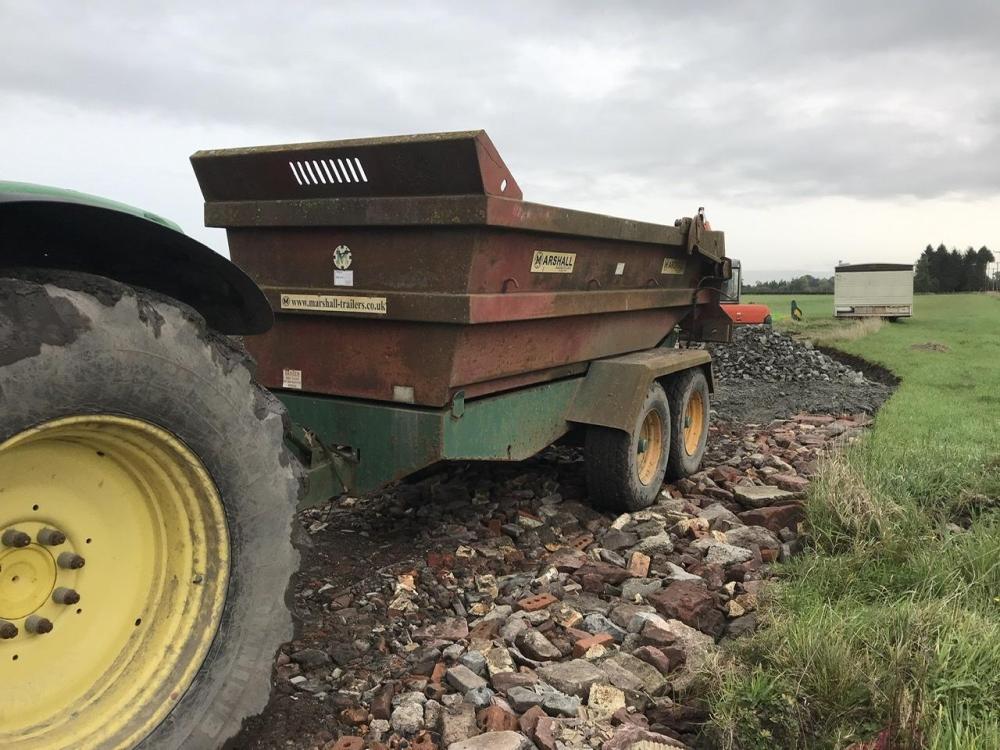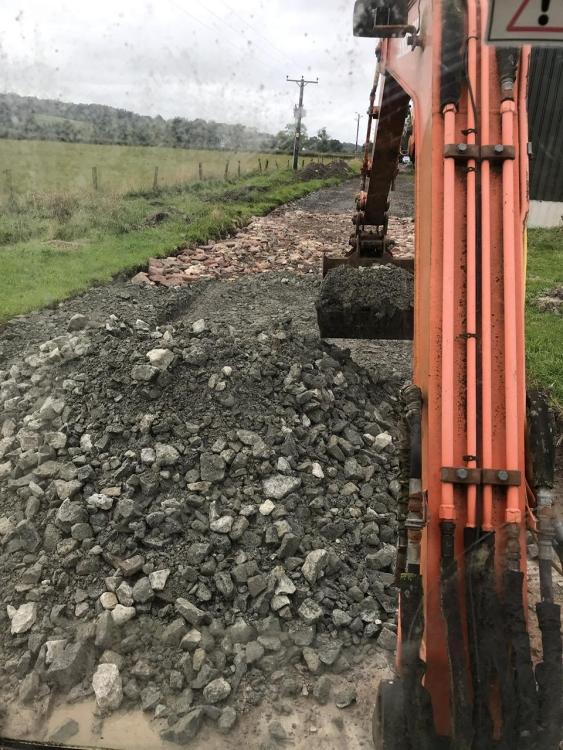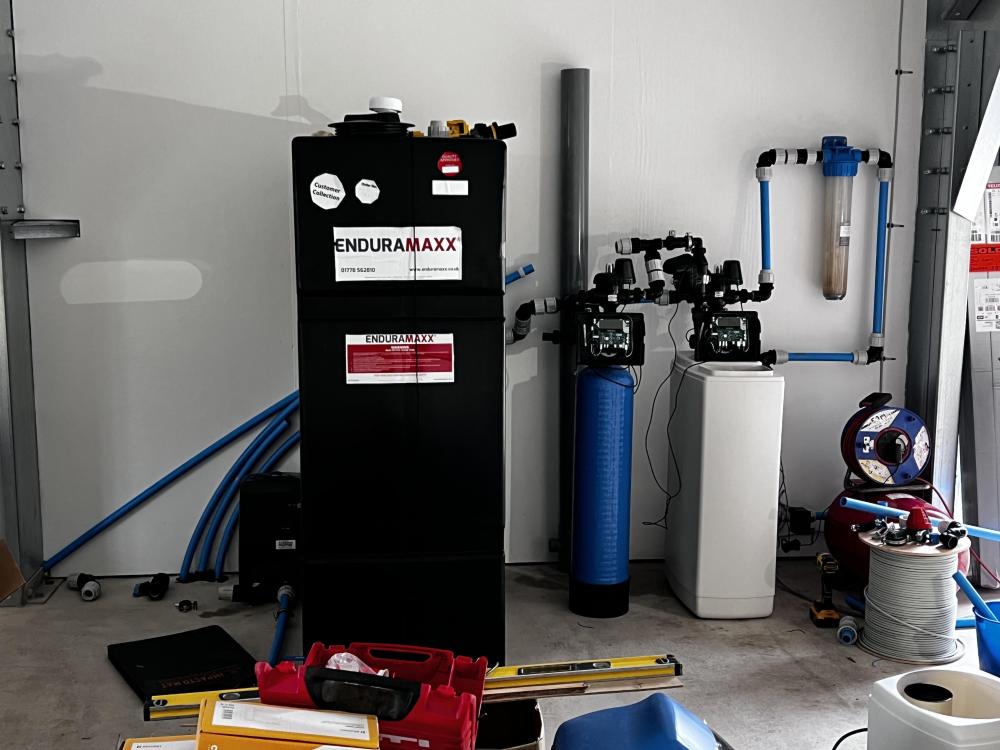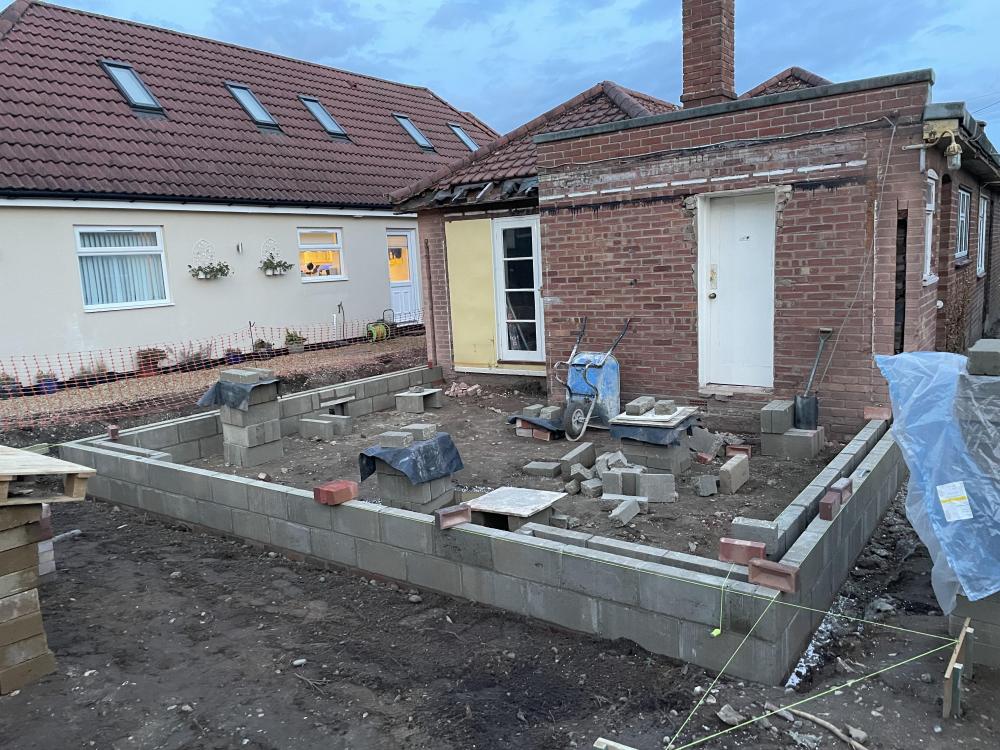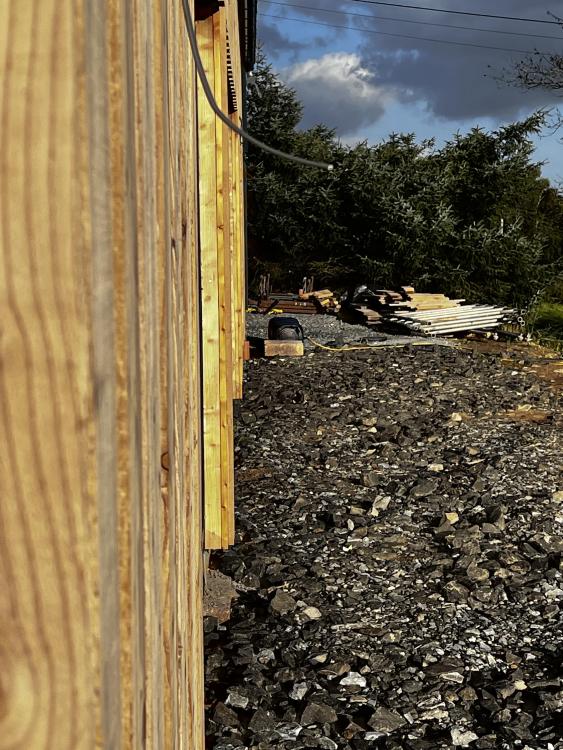Leaderboard
Popular Content
Showing content with the highest reputation on 10/04/23 in all areas
-
I'm almost certain you could build a much more optimised new house for less money than the extensive renovation / modification. I think what is drawn could be in the £1m ballpark, based on £3k/m2 plus risk. A simpler two story new build would cost about the same after VAT allowed for, but with less risk and the final product would be nicer, warmer, more desirable and valued more. Keep doing your homework and report back in a few months2 points
-
Talk to Andrew Jones ,THE VAT MAN look him up on Facebook.2 points
-
2 points
-
I'm just about to do a round of descaling shower heads - as recommended by a 7x year old tenant and it seems to woek. Currently my only descaler in the house is the expensive one for the coffee machine. Can anyone suggest a good general purpose descaling fluid, or a la Harris something on ebay for thruppence which has the same active ingredient? Cheers F Medical update: docs are happy with current recovery and (as evidenced by this post) I am getting some energy back. Expectations are that I should be back at more or less normal energy levels by Christmas, which means I will be able to be as large a PITA as previously.1 point
-
Ok I know a bit but not a lot… so say I build an ICF small house say 150m2 get it air tight and as passiv as possible without a passiv certificate etc. I have installed a system like the total home environment system ( saw it at a show ) Now has anyone done this ( or a similar system) and not installed underfloor heating or any other heating in the house. Obviously the salesman said you wouldn’t need anything else it the house was up to passive ( or near) I think there also heated the hot water. I kinda know it’s a bit of a difficult ( or stupid ) question I also know if later you wanted to add retrofit is more expensive and a pain etc but I am curious if anyone here has done this and the pros an cons …. I hope you don’t mind the question1 point
-
Just a quick hello to everyone Have already been using the site regularly. In prep for our bungalow conversion to a story and a half house. And have found a lot of useful information already.1 point
-
1 point
-
Not too bad price wise, the kit is pretty much complete with everything you need, except pipe and cables. They offer a good range of sizes of cylinder and ASHP.1 point
-
1 point
-
How is that different to a painter using his own brushes? An electrician using his own wire cutters. Ground worker and his own digger?1 point
-
Scratch that. It depends on the exact wording of the condition.... https://www.buckles-law.co.uk/library-news/agri-occupancy-planning-conditions-beware-the-vat-sting/ Quotes.. It is now established that where there is an agricultural occupancy planning condition or obligation restricting occupancy of a dwelling to the agricultural use of specific premises (or similar specific business operational use) then such development will not be entitled to VAT reclaim under section 35 of the VAT Act 1994 (“the 1994 Act”). But... The Upper Tribunal distinguished between the cases with specific link to agricultural and business premises and those will a general agricultural tenancy condition. The later being entitled to VAT refund (assuming all other conditions satisfied)...1 point
-
as long as you dont cover the joists at the bottom then thats not a problem, they are exposed to the air underneath to take away moisture. Ive retrofitted my entire ground floor with PIR and its not without its challenges but its nothing a tight fitting cut wont sort with some air-tight foam and aluminum tape. 100mm wool or 100mm PIR, its a no brainer in my eyes as its double the effectiveness.1 point
-
Get some quotes at a very early stage and work out what is feasible. You need to double your budget or halve your expectations or a combination of both.1 point
-
Probably the most important part of the build has started, the borehole plant install. Well maybe other than finding water in the first place. Our recharge rate isn’t fast hence the biggish tank. Water was borderline whether we needed a water softener but decided to include it, and the water test showed there to be nitrite present which they’d never seen before. They think that after use this might disappear but we’ve put the treatment in anyway. One complication that wasn’t made clear to me was splitting the incoming water into softened and raw (for drinking) isn’t so straightforward due to how the water needs to be routed. The raw water needs to bypass the water softener but still go through the rest of the filtration and the UV and not come from the pumped tank. The pressure vessel holds 30 litres and is at the front of the plumbing so we can take a tee from here and route it through the filtration and to the house with no pump (it’s about 3bar from the pressure vessel) but it means fitting another UV light either here in the garage or under the sink. Something worth thinking about if anyone else ever comes across this problem and indeed this post!1 point
-
I would but some people don’t (my daughter loves walking bare footed), also grow thyme through the grids and smell it every time you walk on it 👍1 point
-
A couple of points I don't think anyone has mentioned yet: + the VAT situation is much better on new builds than refurbs - this may swing the economics. + the BCO (and I suspect you) won't want to build on existing foundations without SE calcs / soil investigations etc - especially if the soil state is known to be challenging anyway. So, you won't be able to avoid the foundation question. You wouldn't want the thing to subside after it's been built would you? + you'll get much better insulation values if you relay the slab. + it's probably no more expensive to re-build rather than do an extensive refurb and you'll almost certainly end up with a better result.1 point
-
It’s all looking very good, well done, as a lover of old things (cottage etc) i was surprised that I like the look of the metal grids with gravel under/around to grow stuff in, yes need some shoes/slippers, but very long lasting (not like wooden decking).1 point
-
The grids you had on the first post are not foot friendly, would need your shoes on to walk over. Look at ultradecking.co.uk also1 point
-
+1 for demolish and start again. We started renovating and soon realised it was a terrible idea so demolished and started again with a blamk sheet of paper. So much easier.1 point
-
An anonymised map would help us comment. Speak to the Rights of Way team at your Local Highways Authority, which is likely to be Borough or County or Unitary Council. Processes do exist but they can get involved and take time (at least several years). If you find the Minutes of your "Local Access Forum" or "Rights of Way Committee" it may help you understand how it works from ongoing business. Equally, have a look at any material from the Ramblers Association or the Open Spaces Society, who promote public access. If it is a Public Right of Way it is by definition a Public Footpath or similar - even if it goes nowhere. Also check if it is on a thing called the "Definitive Map", which is also managed by the Highways Authority and is in general terms the authoritative definition. The Definiitive Map may or may not be online - eg Somerset is online, Notts (where I live) is not (bugger). Each RoW has a name and number attached to it, eg "Tunbridge Wells Path 78", which makes it far easier to discuss precisely. There may be notes or agreements etc attached to the RoW Record for that location on the Definitive Map, which will give you more background. Here is an FOI Request I did about one recently which a 'develop' (ie shyster in this case) has blocked up, and is trying to keep the public off the Public Right of Way illegally by gates, fences, loose dogs, "beware of the dog" signs, threatening behaviour etc, which I am working on getting reopened. Feel free to use it as a template if that helps. https://www.whatdotheyknow.com/request/please_supply_information_held_a#outgoing-1518500 In this case as it is such a recent build, also consider phoning up the developer and asking them what they know. When discussing these things with your LHA or whoever, What3Words is very useful for talking about geographical locations rather than eg postcodes (which are too big) or Grid References (which are also big) or Lat Long from Google which are things like (52.95333546548519, -1.1495320509882963) . HTH F1 point
-
https://www.vat431.co.uk I used him like others here and he was very good.1 point
-
quote is not to scale, we are using 150 also the Cellcore at the bottom helps with insulation1 point
-
On cost estimating, if a "newbuild" figure is (say) £3k per sqm, then that averages out more money on the ground floor because you don't need to build eg another set of foundations for upstairs. In your case, since you are remodelling and extending downstairs, I'd say use the newbuild figure for the whole thing for an upper estimate rather than reduce it "because we are remodelling", as you are doing extensive work downstairs too. That will in practice give you an extra contingency -which given the project may be useful to have built in. For a second estimate, perhaps use the newbuild figure for the area of your extension downstairs, plus the areas of the other stories, plus a 'remodelling' figure for the existing area you are retaining. Perhaps add a number for the extra cost of each "feature" if that is not in your basic numbers. That will begin to give you a pair of bracketed numbers for upper and lower figures (they will be indicative, not boundaries). Tip one: study your T&C agreement / contract with the architect with a fine tooth comb. If you have a % deal (say 15% for design and supervision to completion) then what happens if your needed budget increases by say 15% is that you suddenly find yourself paying an extra 15% extra architect fees without much extra work being done. It's your call how to deal with that type of potential elephant trap. Tip two: Architects quite often quote for an idealised version of your brief, and have a whole selection of ready less-expensive feature suggestions for when the customer goes GULP! Don't be afraid to ask for 95% as good but less gold plated ideas. Ask your architect for his better or more practical ideas than your suggestions or what he has shown you - that is the experience you are paying for. But also the more knowledge you develop yourself, and the more thinking time you give yourself, the more effective customer you can be. In this case, I'd say that you are quite attached to your architect, and you need to keep an eye on yourself to make sure you reflect on each thing before agreeing to it - rather than risking being a "Yes Customer". It's all about creative and thoughtful dialogue with an architect as you design your house together. HTH F1 point
-
I don't think what your architect has sketched is constructable, not within a sensible budget, at least. I'd be amazed if your existing structure and walls will take that much modification and additional loads. Id expect extensive steel work, underpinning and piling. Take a step back, look at different options. Speak to other people. We were in exactly the same scenario 4 years ago, and bought a property to renovate. Lift roof, additional floor, extension, all that. A quick scrape around the bottom of the house revealed that there was no way the structure could take it. We don't regret building from scratch for one second. You can achieve so, so much more with a clean slate. Making that design pass BC regs, never mind to a future proof spec, will be a real challenge.1 point
-
£/m2 is a rule of thumb at best, there are so many factors that will push it up or down. Remodelling might save you in some areas, but it will cost you more in others if you're trying to tie into existing structures. You'll also have VAT to think about - so I don't think I'd assume remodelling will save you money, it might actually be the other way round. For context our build budget is not dissimilar to your own - we've spent money on some quality materials for the exterior finishes and some architectural interest (as it sounds like you're planning), but it's also smaller, we're running individual trades with a fair bit of DIY, and are likely planning a very basic interior fitout. We definitely couldn't fit 50k in the budget for the staircase.1 point
-
That's a beautifully smooth design, but I'd not convinced of the practicality / safety for say a 70-year-old - "forever house", remember. The handrail looks very very smooth, and very difficult to use for applying steadying force at the hand - especially dry and weaker hands of elderly people. Sympathetic staircase design is one of the elements that makes a house practically liveable or not as we get older. If the space is available and you want a curving staircase, I'd suggest an open well staircase to make it more sympathetic, with the spiral handrail as a feature. Given the project is large, I'd also provision for a lift. F1 point
-
I'm weighing up Fgas as I have a large number of retrofits to do. The industry does seem to be heading for monoblock, the primary advantage of which is no need for Fgas. The supposed other advantage is that it"plugs in" to our existing dominant heating system (wet radiators), but that is debatable as many retrofits (which will be the majority) also require changes to that system (bigger rads, pipes etc) I can see that going the air to air route whilst needing a complete system install (all new pipework, emitters etc) would allow for "overlaying" the HP system over the existing boiler & rads setup. This has a couple of advantages - no disruption to existing heating hot water system, so can be installed in cold seasons - no need to wait until existing system needs replacement - no worries about new system being "insufficient" as old system is there as backup - for combi systems no need to install a tank initially - no worries about HP not being able to cope with cold snaps or being more expensive to run. - cooling in summer Our current antipathy to air to air seems to be born from a British distrust of air-conditioning rather than anything else.1 point
-
1 point
-
Yes. In theory. But there are people like me who feel it is their job to walk each local footpath, once a year and register the fact that the footpath is open. Your footpath may well be one of those that have been 'walked' and registered. Unless you have evidence that your footpath has never been used, no further action can be taken. The local answer to that problem taken by some farmers create all sorts of obstructions that make it at best difficult, and sometimes impossible to walk a footpath. Thus the path lapses into disuse. And when that has happened for long enough, they can apply to have it removed from the register. There is a pragmatic approach. Apply to have the footpath re-routed. In your case the next question is where to? Contact your local Footpaths Officer for advice.1 point
-
With costs, bear in mind that the foundations could end up costing way more that estimated for. Have a look at areas now where you can save money while still retaining the bits that wow you, and see what you can personally diy as that'll save on some labour costs down the line. Above all, be realistic with the costs, it's getting highlighted by several members based on experience and we all mean well.1 point
-
My guess is that… You should pay VAT on the hardcore that you buy but only if you're buying from a VAT-registered entity. You would then claim it back at the end of the build if you qualify for the "DIY Housebuilders’ scheme". The crusher man is correct in charge you 0% VAT on his services (including his machine, which he operates) as that counts as site labour. … only a guess.1 point
-
This is exactly I am looking for. Insightful tips to work around and stay within limitation we have so many thanks for this. Also have written to the architect to get opinion from few contractors to see cost feasibility.1 point
-
I just remembered seeing a birch ply staircase done by angus and mack, could be an alternative material to consider. https://www.angusandmack.com/projects/staircase-custom-door-fitted-interior-the-arbor-house1 point
-
Weather compensation set, timers set, analog stat wired in (for now)….. we have heating and hot water. Once my programmable stat gets wired in then I’ll switch the timers off and use the stat to take care of things. Doesn’t seem to be running up my smart meter too fast, even with the short cycling that I’m experiencing in this mild weather, with only 5 rads in circuit and the bottom of the weather comp curve set to 37… It’s probably a bit too big by a kW or so, but I guess it’s better for it to be ticking along in the middle of it’s modulation curve than running flat out. Tech note, if you plan on using it like a system boiler and just rely on the pump in the unit, without a buffer or header, you need to change the pump settings from ‘demand’ to ‘normal’ , otherwise the pump will stop when the buffer/flow sensor reaches temperature.1 point
-
Unless your ground is so bad it will struggle to cope with the weight of your fancy new staircase then I don't know where you are getting that piling will make it completely uneconomical compared to demolition and rebuild (which also brings VAT savings). I'd definitely get some quotes and have a look at numbers as you may be overestimating under the ground and underestimating everything else.1 point
-
Hi all. I don't think this is safe for the following reasons. Mind you you can ask ten SE's and you'll get ten different answers.. here are my thoughts. Agree that the ledger distributes the load over a number of the fixings. Mainly to account for a few badly installed ones. Also agree that if you use EPS or foam 200 you will get initially nominal tension in the anchors (as the say load increases due to snow) as the EPS will compress as the ledger rotates (and the fixings start to bend) due to the added eccentricity of the load. If the ledger was hard against the wall, it was 50 mm thick and with joist hangers then the eccentricity would be would be 50mm, maybe a bit less if the hangers are of wrap over type.. If you put a compressible insulation behind the ledger the eccentricity is now doubled to roughly 100mm and this completely changes the behavoir of the connection in a dramatic way. The insulation is not strong enough to deal with the forces until it compresses by a long way and by that time other things will fail.. probably suddenly which is dangerous. An EPS or Compacfoam 200 insulation means that it will often carry a load of 200 kN/m^2 at 10% compression.. thus before it can carry that much compressive load it needs to compress by 50 x 10% = 5.0mm and by that time your ledger will have rotated a lot and dropped a bit. All the bending forces will by that time get transferred to the fixing which is into brittle masonry. The fixing will now be subject to the same downwards loads (call these vertical shear forces) but also a significant bending force due to the compressible nature of the insulation. This causes the masonry to not least crush as the fixing enters the wall and that can reduce the capacity of the fixing by more than 50%. I have only touched here on some of the basics.. the behavoir of these types of stand off connections is much more complex and you enter into this world at your peril. I think your starting point here is to get a feel for the difference in load capacity of a fixing with a stand off (which is what you have) is to go to the Hilti website and see how much difference it makes when you have a a column base plate set above say a concrete pad stone. You can see this often on lighting standards next to motorways / railways where you can see the column base plates set above the bases with the bolts exposed.. you have something similar. Now even navigating the Hilti or similar site and interpreting the load data is going to take a lot of knowledge, but just have a look.. they have some pretty user friendly diagrams. I hope you'll then see the big load capacity reduction and realise that what you are proposing is not safe unless you design for the completely diiferent behavoir. However there is often more to this than meets the eye. When we design a building we want to tie different bits together for overall stability. In your case this could mean that we want to tie the rafters back to other parts of the house so the whole thing acts as a oner rather than individual elements.. we call this as SE's not least robustness (if one bit fails the rest hangs in there) and look at alternative load paths. We think.. just say the builder cocks that bit up.. is there another way the building can hang in there before it falls down? So rather than pushing the connections to the limit we need to introduce a bit of redundancy to account for human and material error. In principle you could make you thermal break using say something like this https://www.armatherm.co.uk/thermal-break-materials/armatherm-frr/.. I think it is a waste of money.. just accept you have a bit of a cold bridge and beef up insulation elsewhere to compensate. Also remember that you are fixing into old masonry, maybe bricks with holes in them, for the fixings to work well they need to be away from the mortar beds etc.. you are asking too much here.. in theory it may work but can you build it in real life and make it safe? So to conclude my thoughts are DON'T do this. Fit the ledger against the wall, maybe with a DPC behind.1 point
-
1 point
-
1 point
-
It’s the little things. When we were setting everything out, which feels like a lifetime ago, we mulled over whether to set the garage and house perfectly in line or set the garage back. The debate was it either has to be bang on or the garage purposely set back enough so that it looks intentional as if it was marginally out it would long wrong. It took a bit of mocking up both structures to get it right. It’s spot on which always makes me smile because it’s only me (and the groundwork guy) that cared about it as we stood there in the rain and cold with a line and some timber.1 point
-
Had to condemn the back boiler due to a ventilation issue…. Just had a week off the day job getting it installed with my builder. Been a long week of self doubt (will this keep us warm?) and sleepless nights but I think we’re over that now. All new pipework throughout, rads sized for 45 deg at -4, three Smiths Ecovector fan coils where we didn’t have space on walls for larger radiators. I did heat loss calcs in two separate packages, the freedom toolkit and heat engineer. They both came out around 6.8-7kW at -4, with the old double glazing (we’re replacing that at the moment) and the uninsulated timber floors (which we start on on Monday). Lagging, thermostat, and some more lagging to do tomorrow. All parts and my builder for a weeks day rate, just got change out of £12k. More than I thought, but the rads came to £1200 and the ecovectors were £1400…. I haven’t bothered to calculate a payback period, we needed a new heating system, and if these rads and pipework last as long as the last system (installed in ‘86 by the council, after the previous coal fired boiler had done 40yrs) then I’ll be happy. At least that’s 18-19000kWh of gas (our average annual consumption) that we can leave to be burnt in a ccgt. I’m thinking we’ll swap an £1800 gas bill for £1200 ish uplift in the electric bill, before we even consider solar and battery. Oh and to anyone thinking that hi-line eFlex underground pipe is flexible, it isn’t….. what a sod to install.1 point
-
0 points
-
0 points
-
0 points
-
She doesn't have one other than the Trex stuff (none of the cheaper samples she liked).0 points
-
0 points
-
0 points
-
0 points
-
0 points
-
Don't tell @Pocster, he will have all his tenants 'working'.0 points
-
0 points
This leaderboard is set to London/GMT+01:00






